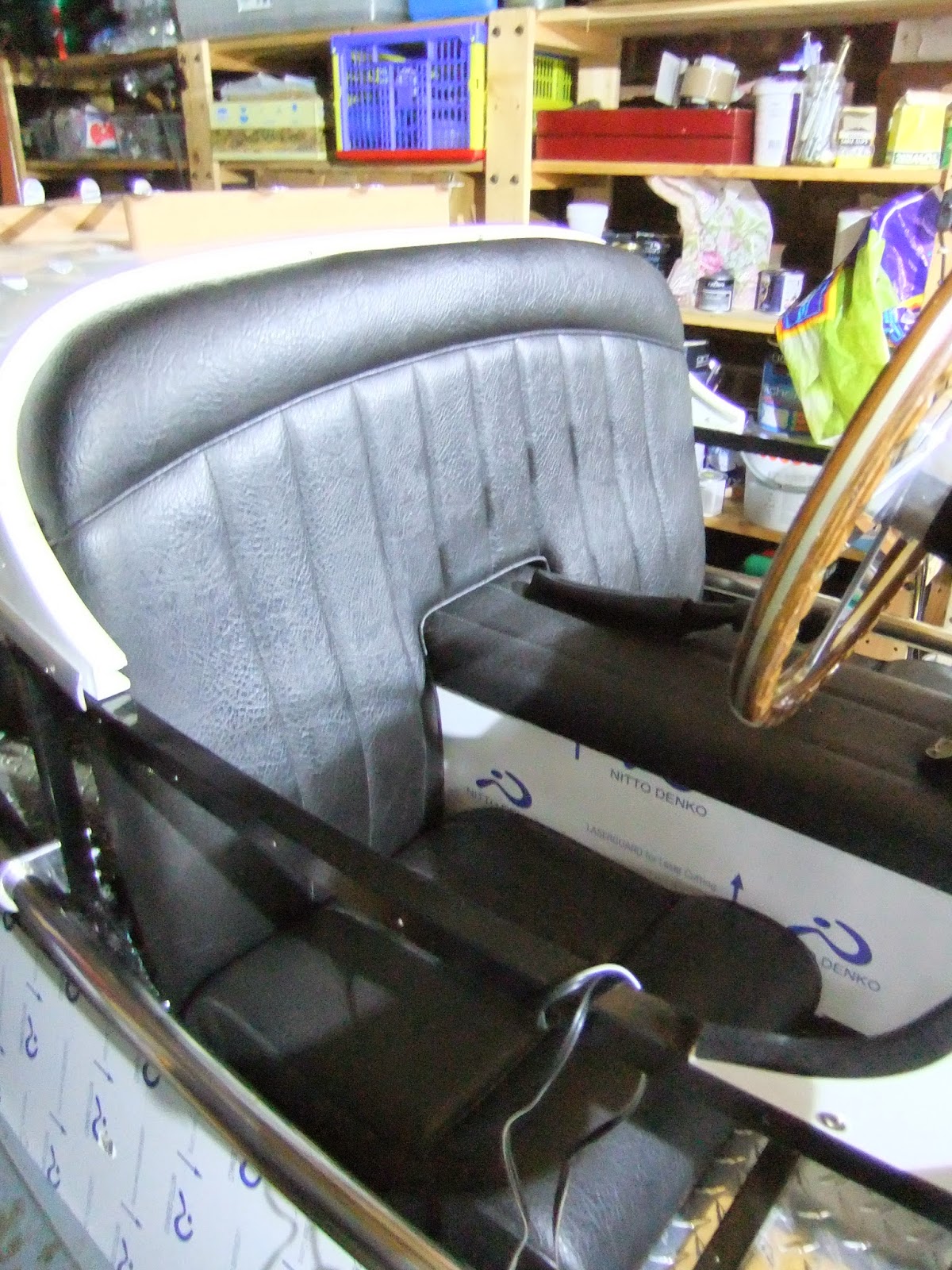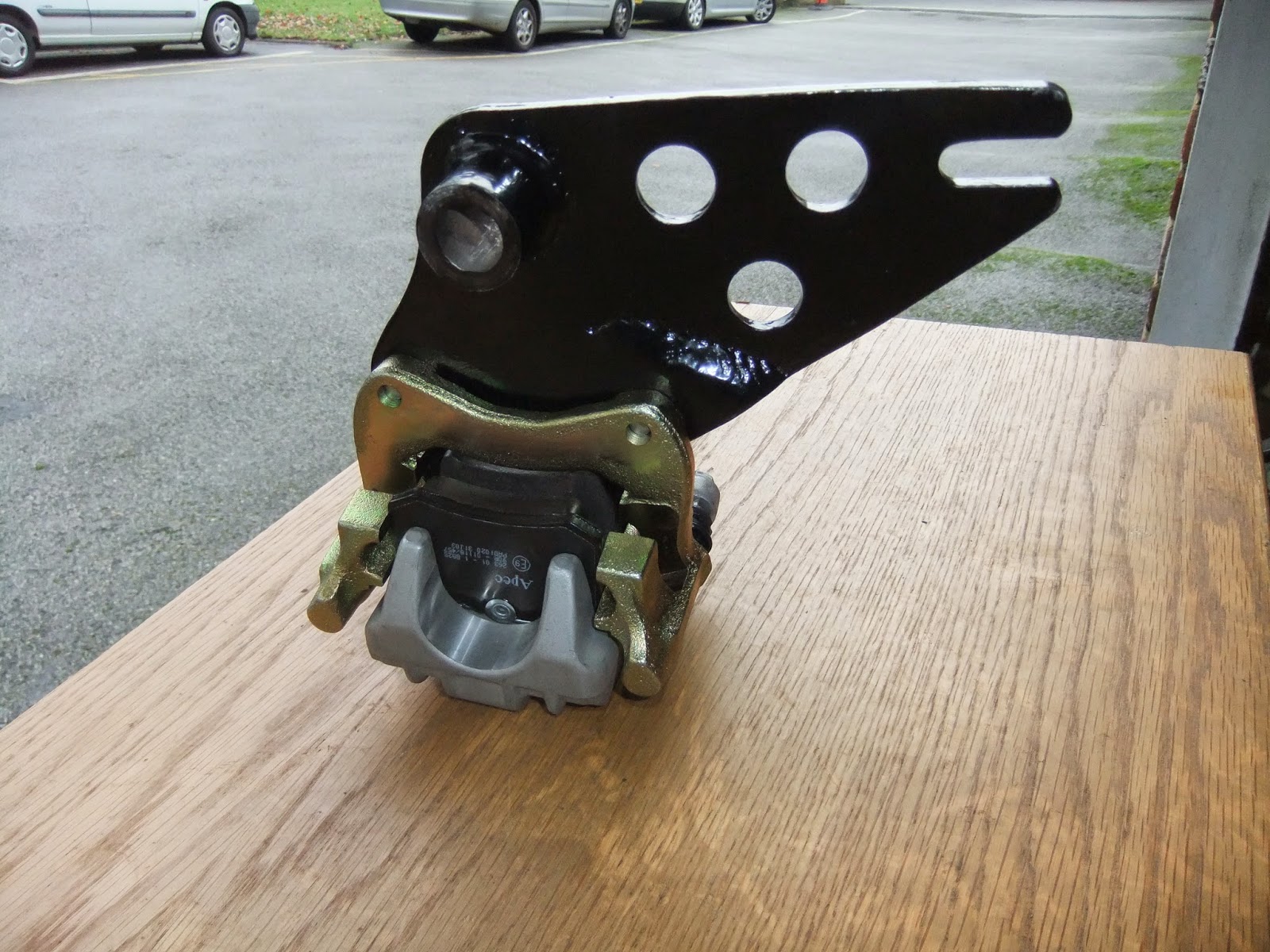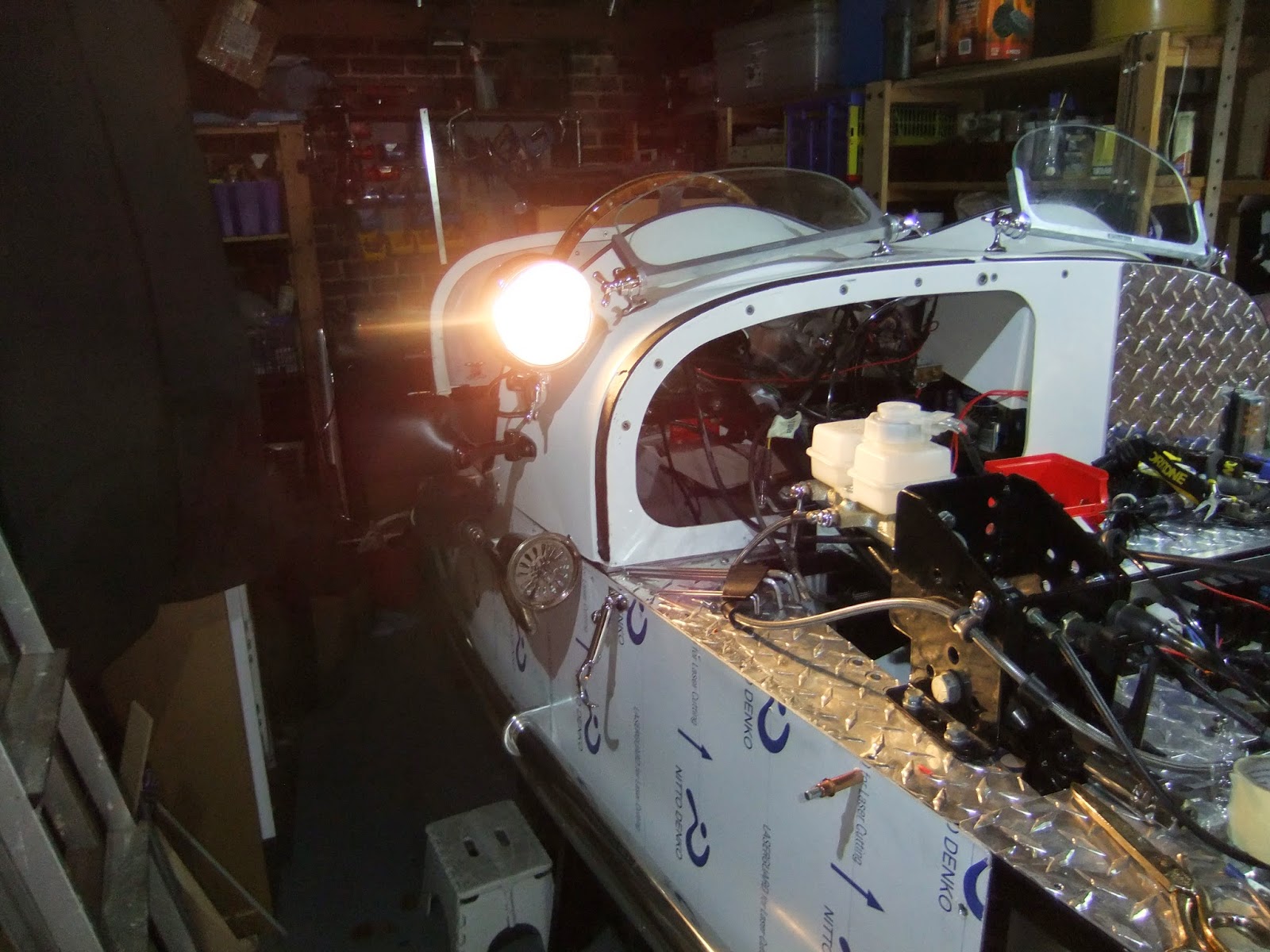What had been occupying my mind, was the best way to lift Marjorie of the trestles. I had worked out that with a bit of help I could get my engine crane down the side of the garage so that with a couple of straps I should be able to lift her up, remove the trestles and gently lower her onto her wheels.
In readiness I bought a couple of ratchet adjustable straps from Machine Mart, they are actually for tying down a motorbike onto a trailer, but I was advised that they would be good for the job, each strap rated for 500kg and the car weighing in at less than 450kg they would be fine. On Saturday my mate Colin came round and he was easily persuaded to give me a hand in manoeuvring the crane into place and we discussed various options for dropping Marjorie in stages. The next day I messed about with the crane and repositioned the trestles as far to each end of the car as possible, allowing maximum adjustment of the cranes position to ensure that I got the balance position about right.
I placed clamps onto the bottom rail to stop the straps from slipping closer together, but when the straps met overhead and clipped onto the cranes hook, the front strap passed over the scuttle. I removed the little Brookland Screens and the steering wheel, but I was concerned that damage to the scuttle would occur as the weight of the car was taken.
Another trip to Machine Mart produced a Load Leveller, which is intended for lifting engine/gearboxes in and out of a car, again it was good for 500kg and as the above pictures show it's good for the job. At 730mm in length it straddles the scuttle and fuel tank and with a small adjustment to the length of the front strap the car now lifts cleanly off the trestles. I am sure that the load leveller will come in handy for further engine removals on future projects, as I am afraid to say that the car building/restoration bug has bitten hard. The revised plan is now for a one stage lower to the ground, but with the front wheels onto ramps, which will make it easier to extract the crane legs from under the car. A quick final lift at the front to remove the ramps and we're there, ready to start the engine and drive out of the garage, to the flashing of cameras, popping of champagne, a roll of drums and much applause, must stop dreaming.



















































